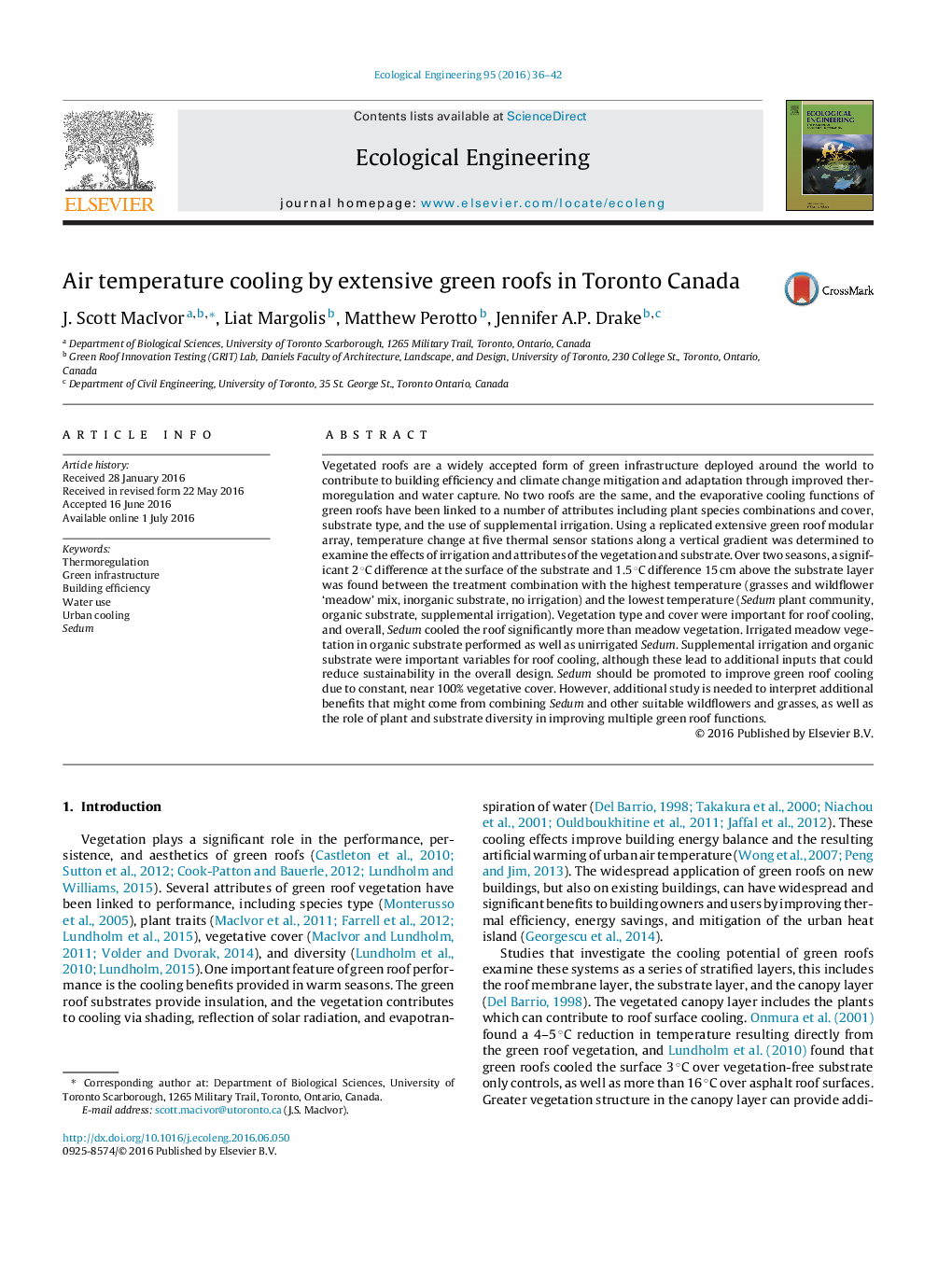| Article ID | Journal | Published Year | Pages | File Type |
|---|---|---|---|---|
| 4388425 | Ecological Engineering | 2016 | 7 Pages |
•Greater cooling by non-irrigated Sedum than irrigated meadow mixes in organic substrate.•Top performing green roofs had irrigated Sedum in 10–15 cm organic substrate.•Dense plant cover in 2D is more important than plant structure in 3D for roof cooling.•Plant structure provides other green roof benefits; add Sedum to improve cooling.
Vegetated roofs are a widely accepted form of green infrastructure deployed around the world to contribute to building efficiency and climate change mitigation and adaptation through improved thermoregulation and water capture. No two roofs are the same, and the evaporative cooling functions of green roofs have been linked to a number of attributes including plant species combinations and cover, substrate type, and the use of supplemental irrigation. Using a replicated extensive green roof modular array, temperature change at five thermal sensor stations along a vertical gradient was determined to examine the effects of irrigation and attributes of the vegetation and substrate. Over two seasons, a significant 2 °C difference at the surface of the substrate and 1.5 °C difference 15 cm above the substrate layer was found between the treatment combination with the highest temperature (grasses and wildflower ‘meadow’ mix, inorganic substrate, no irrigation) and the lowest temperature (Sedum plant community, organic substrate, supplemental irrigation). Vegetation type and cover were important for roof cooling, and overall, Sedum cooled the roof significantly more than meadow vegetation. Irrigated meadow vegetation in organic substrate performed as well as unirrigated Sedum. Supplemental irrigation and organic substrate were important variables for roof cooling, although these lead to additional inputs that could reduce sustainability in the overall design. Sedum should be promoted to improve green roof cooling due to constant, near 100% vegetative cover. However, additional study is needed to interpret additional benefits that might come from combining Sedum and other suitable wildflowers and grasses, as well as the role of plant and substrate diversity in improving multiple green roof functions.
